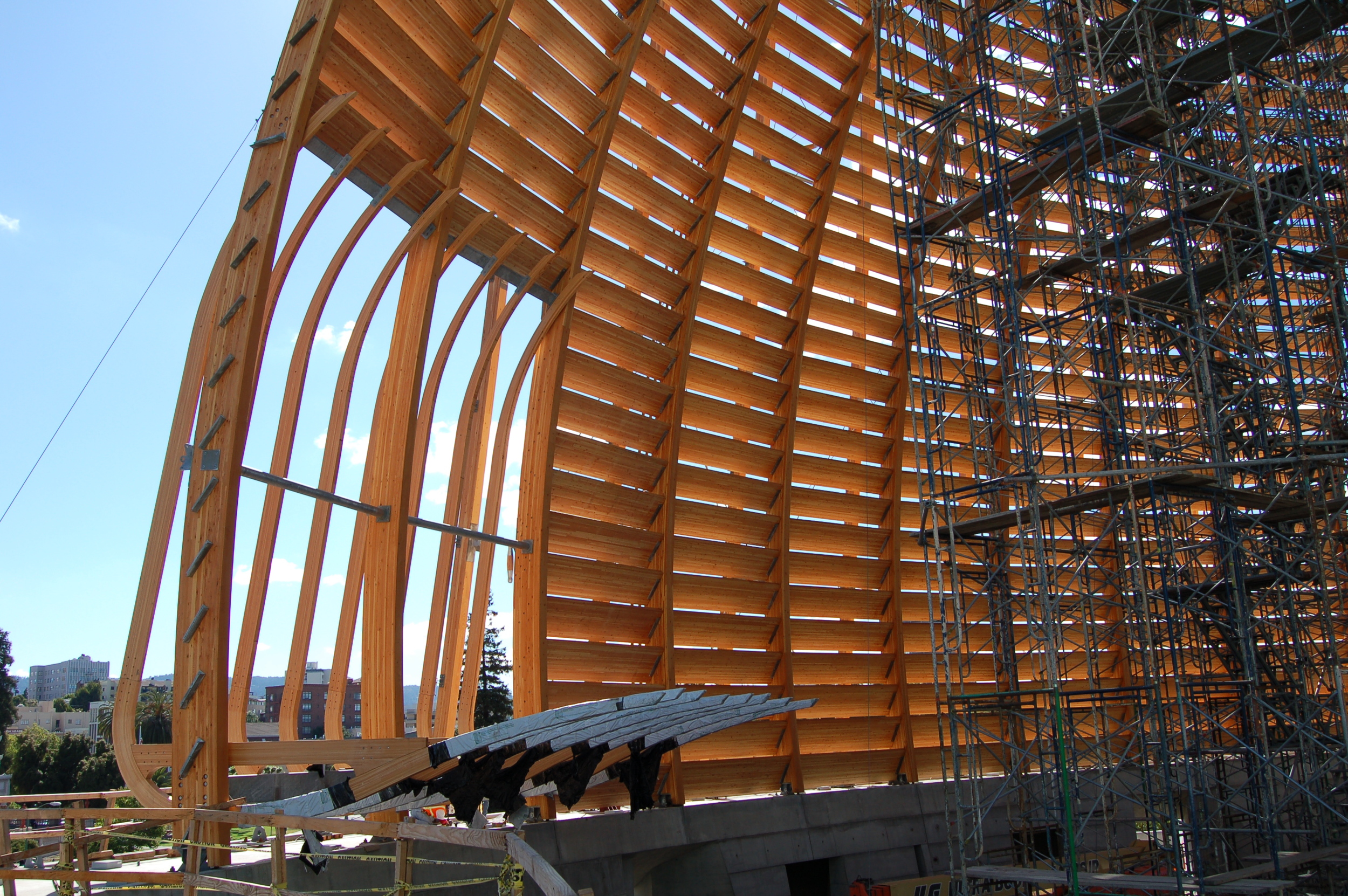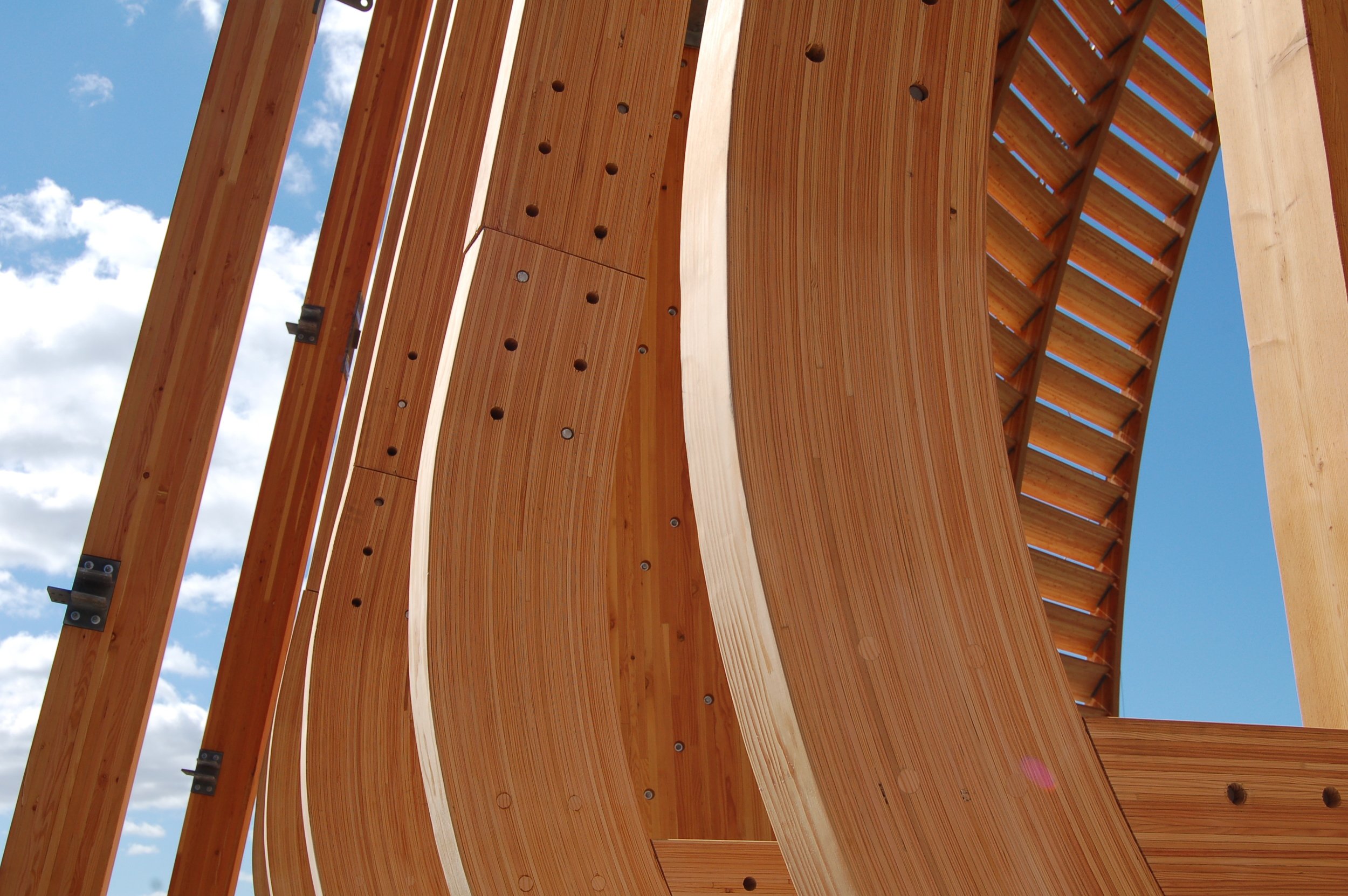Organ Shelf
The Organ Shelf was planned and built as a platform for a display organ which would be designed and installed well after substantial completion of the Cathedral. From an acoustic standpoint, the general goal was that the shell would work to appropriately enhance the music produced by the organ pipes, but that it would also serve as a baffle for the choir and other smaller musical ensembles stationed below, allowing them to hear themselves and to project their music to the seated assembly. I worked directly with the acoustician refining the design over several months, as well as the organ designer to establish a general aesthetic for the display organ.









Phasing the project so that the new organ would come after the building was completed was in fact, intentional. A clear advantage to this schedule allowed for the organ designers to test and understand the acoustics of the built space before embarking upon their design. As such, the acoustical strategy for the sanctuary continued apace with procession of the rest of the building design and construction.
As the building construction neared completion, the music/organ design committee convened with our firm as well as the acoustician to begin the selection of organ designers. And it was at this juncture that I was witness to one of the most surprising and vehement design reversals for the Cathedral. In a room full of prospective candidates, representatives of the music committee presented a emotionally charged argument against the acoustical strategy. It's notable that this had already been designed, peer-reviewed and approved by all deciding parties. For reference, the general idea was to install an acoustical panel (covered in perforated wood to match the wooden ribs) on the surface of each of the horizontal ribs spanning between each vertical rib. The panels would be installed while the floor was still clear and the scaffolding was up, to allow workers to rappel from above for the installation at the highest ribs (still to come: installation of radiant heating tubes, installation of mechanical vents, pouring of topping slab, installation of pews, embedded art/signage).
The music committee had two major objections: First, they were concerned that the acoustical panels would dampen the reverberation of the space to such a degree that it wouldn't sound like a cathedral. The second concern was simply aesthetic. They thought the fabricated panels would ruin the beauty of the natural wood of the ribs.
One thing that bears mentioning at least once, is that in many ways this was a special project for many parties. This was perhaps the most drastic case, but still, just one of a number of instances that I can recall where concerns that were expressed very late within the construction process were heeded for the perceived betterment of the project.
A number of avenues were discussed to deal with the issues the music committee brought up. One was to ignore them and proceed with the approved design. Another was strip the entire cathedral of all acoustical panels, with the risk that the result would not be testable until construction was complete. If the acoustics were horrible, then a post-construction installation of panels could happen, but because it would then be out of its original construction sequence, it would be a much costlier and difficult affair, requiring special equipment to be brought in that could work around the pews and reach the highest ribs. And of course, the acoustician would walk away from the job with the latter option.
In the end, the second option was chosen.
Years later, when the Cathedral was completed, the acoustics turned out to be just fine.
